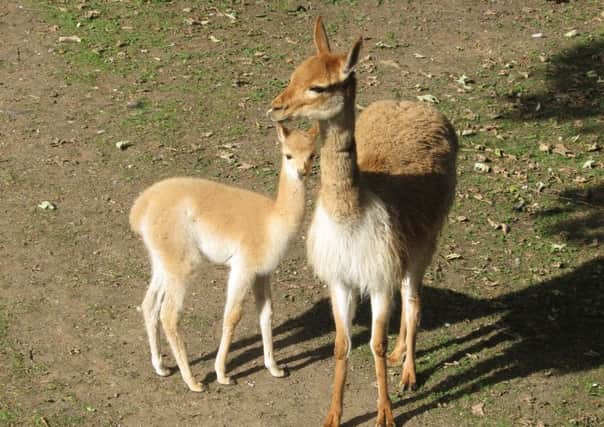Goodbye and hello as vicuna baby is born


The cria is fit and healthy and was trying to stand up just 15 minutes after its birth.
Its sex is still unknown but the zoo keepers should be able to find out within the next few days. The parents, Holly and Bailey, are doing an excellent job at looking after and protecting their new addition.
Advertisement
Hide AdAdvertisement
Hide AdOn Thursday 22nd September we said goodbye to last year’s baby, a male called Vinnie, who was moved to Duisburg Zoo in Germany where he will join a breeding programme.
Holly and Bailey have been residents at the zoo for six and half years. Their partnership was recommended as they are involved in a European endangered species programme which manages individuals and encourages the conservation and breeding of them.
The vicuna used to be a common species but since the 1500s, after the Spanish conquest, their numbers were reduced to around 10,000 by the 1960s, making it one of the most threatened species in South America. This prompted conservationists to set up breeding programmes to increase their numbers and conservation areas to help protect them from poachers. This has proven to be successful as there are now over 300,000 found within South America and they are classed as being least concern by the IUCN. These efforts need to continue as vicuna are still poached for their wool.
Vicunas belong to the camelid family along with camels, alpacas, llamas and guanacos. It is thought that the vicuna is a wild ancestor of the alpaca.
Advertisement
Hide AdAdvertisement
Hide AdThey have a long neck and legs and feet which are able to grip onto rocks and gravel. They have brown fur on their backs and white on their fronts. A general group in the wild consists of a dominant male, several females and their young.
The male defends two separate territories; one used for sleeping at a high altitude and a lower one for grazing on the grass during the day. The male also looks out for predators and gives out a whistling call to notify the rest of the group and helps to defend them.
If they decide to flee they can reach speeds of around 50 kilometres an hour.